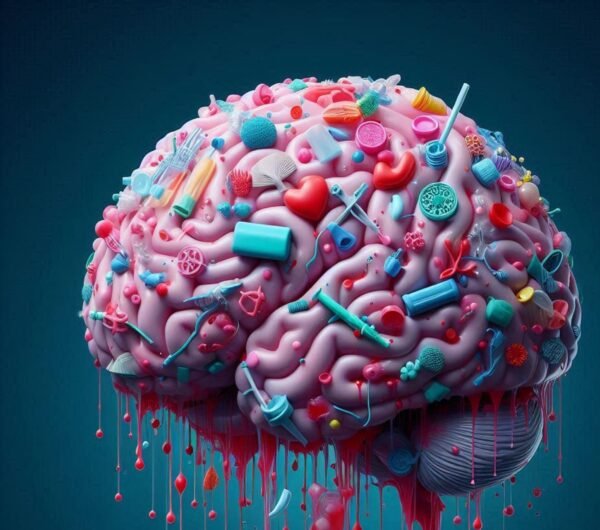Microplastics Can Block Blood Flow in The Brain

Recent research has uncovered alarming evidence that microplastics can obstruct blood flow in the brains of mice, potentially leading to serious neurological issues. This study, conducted by the Chinese Research Academy of Environmental Sciences, marks a significant advancement in understanding how microplastics affect brain function.
Microplastic Blockages: The researchers tracked the movement of microplastics within the blood vessels of mouse brains using advanced laser imaging techniques. They observed that immune cells loaded with microplastics became trapped in the brain’s blood vessels, particularly in the cortex, leading to blockages similar to blood clots.
Cognitive Impairment: Mice exposed to microplastics exhibited noticeable declines in movement, memory, and coordination compared to their unexposed counterparts. This suggests that microplastics may impair cognitive function by disrupting normal blood flow.
Health Risks: Although the blockages were temporary and most cognitive functions returned to normal within a month, researchers warned that repeated exposure could increase the risk of neurological disorders, including depression, anxiety, strokes, and cardiovascular diseases.
While this study was conducted on mice, it raises significant concerns about the potential effects of microplastics on human health. Microplastics have been found in various human tissues, including lungs and possibly the brain, suggesting a need for further investigation into their long-term impacts on human neurological health. Researchers emphasize that although there are biological differences between mice and humans, the findings warrant serious attention due to the growing presence of microplastics in our environment and bodies.
The study highlights a previously unrecognized mechanism through which microplastics can disrupt brain function by obstructing blood flow. As research continues to explore these implications, it becomes increasingly crucial to understand how microplastics may pose risks not only to wildlife but also to human health. Further studies involving larger animal models may provide deeper insights into these potential health risks.
Microplastics In Placentas Leading To Premature Births
Recent research has revealed alarming findings regarding the presence of microplastics in human placentas, particularly in those of infants born prematurely. This study, presented at the Society for Maternal-Fetal Medicine’s annual meeting, indicates that microplastics and nanoplastics are found in significantly higher concentrations in preterm placentas compared to those from full-term births.
Higher Concentrations in Preterm Placentae: The study analyzed 175 placentae, with 75 from preterm births (averaging 34 weeks) and 100 from full-term births (averaging 37.2 weeks). It found an average of 203 micrograms of plastic per gram of tissue in preterm placentas, which is over 50% more than the 130 µg/g found in full-term placentas.
Surprising Accumulation Patterns: Researchers noted that the accumulation of microplastics was not simply a byproduct of longer gestation periods. Instead, preterm placentae exhibited higher levels of these particles even at earlier stages of pregnancy, suggesting a potential link between plastic exposure and premature birth.
Types of Plastics Detected: At least 12 different types of plastics, including PET (common in bottles), PVC, and polyurethane, were identified in the placentas. This indicates that environmental exposure plays a significant role in the accumulation of these materials.
The presence of microplastics in the placenta raises serious concerns about their potential impact on fetal development and maternal health. Microplastics are known to cause inflammation, which could trigger labor and contribute to premature births. The study adds to a growing body of evidence linking environmental factors, such as plastic pollution, to adverse health outcomes.
Dr. Kjersti Aagaard, a senior author of the study, emphasized the need for further research to understand how these particles infiltrate the human body and their long-term effects on health. The findings underscore an urgent need to address plastic pollution as a public health concern, particularly concerning its effects on vulnerable populations such as pregnant women and infants.
This groundbreaking study highlights a troubling correlation between microplastic exposure and premature births, calling for increased awareness and further investigation into the health implications of plastic pollution.
